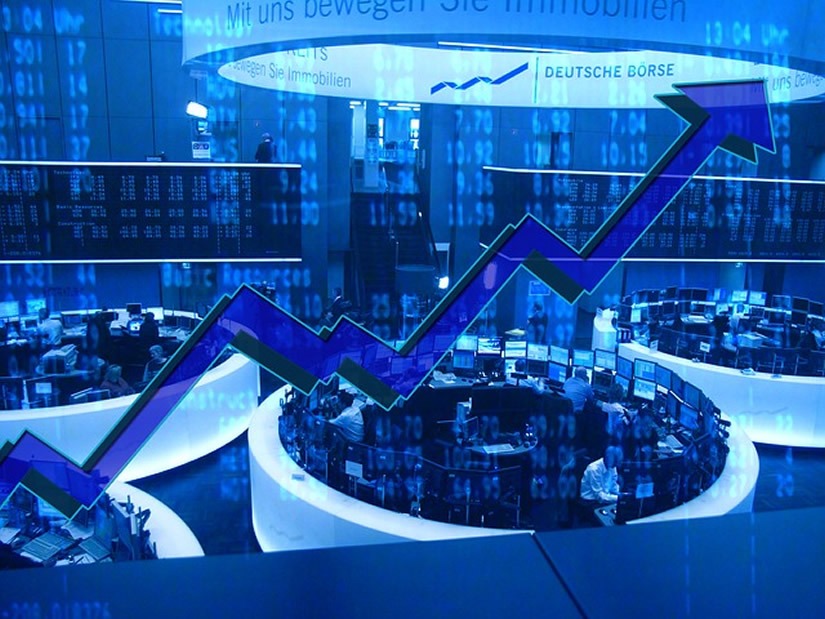By Han Tan, Market Analyst, ForexTime
On Monday, Tesla will officially begin trading as part of the S&P 500 index.
After all, the electric automaker’s market value had grown too big to ignore, having surged by more than 640% so far in 2020. Tesla is now the ‘world’s most valuable automaker’, while Elon Musk sits pretty in second place on the Bloomberg Billionaires Index as the Tesla CEO is now worth over US$150 billion.
Why is Tesla’s inclusion into the S&P 500 such a big deal?
Free Reports:
 Get our Weekly Commitment of Traders Reports - See where the biggest traders (Hedge Funds and Commercial Hedgers) are positioned in the futures markets on a weekly basis.
Get our Weekly Commitment of Traders Reports - See where the biggest traders (Hedge Funds and Commercial Hedgers) are positioned in the futures markets on a weekly basis.
 Download Our Metatrader 4 Indicators – Put Our Free MetaTrader 4 Custom Indicators on your charts when you join our Weekly Newsletter
Download Our Metatrader 4 Indicators – Put Our Free MetaTrader 4 Custom Indicators on your charts when you join our Weekly Newsletter
Keep in mind that there are about US$11 trillion in funds that are tied to this benchmark index.
When a company is added to this ‘big boys club’, many of these funds are forced to buy that just-included company’s shares, while dumping others, in order to accurately reflect the S&P 500’s overall performance. Such adjustments could result in trades worth tens of billions of dollars. This suggests an incoming wave of buying that could push Tesla shares even higher, fresh with its blue-chip status.
However, many investors and traders who had already taken part in the stock’s 18,200% advance since going public in June 2010 may see this as a selling opportunity to lock in their profits, taking advantage of the forced buying.
So where does that leave us?
With a big unknown and a potentially volatile trading day ahead for Tesla’s stocks, and perhaps even for the rest of the S&P 500.
Cross-currents ahead
There are several competing themes that investors have to contend with over the coming days:
- Covid-19 vaccine developments: European authorities are reportedly ready to ramp up their approval process for the vaccine, potentially by Monday, with hopes of disseminating it before Christmas. While such news may be supportive of broader risk appetite, it may be scant consolation for Pfizer’s share prices. The stock has registered six consecutive days of declines, falling by more than 12 percent since posting its highest levels in nearly 17 months last week.
- US fiscal stimulus talks: US lawmakers are hoping to agree to a government spending plan worth about US$900 billion by the end of the week. The funds are sorely needed for the US economy, considering the limping recovery in the jobs market, while the November retail sales data produced a weaker-than-expected print on Wednesday. A fresh injection of US fiscal stimulus is likely to spur stocks higher, while failure to secure a deal by year-end could disappoint risk assets.
- Brexit trade negotiations: Across the pond, Brexit trade talks are coming down to the wire. UK and EU negotiators are hoping an agreement can be sealed in a matter of days. Note that we are exactly two weeks away from that hard deadline, with the transition period ending on 31 December. Failure to strike a deal by then could jolt markets, and almost certainly send the Pound careening, as markets are forced to face up to the harsh realities of a hard Brexit.

- Fed support: At least stock markets can draw continued comfort from the US Federal Reserve. After the FOMC’s final policy meeting of the year concluded on Wednesday, Fed Chair Jerome Powell reiterated the central bank’s support for the US economy and for financial markets. This should ensure a supportive environment for US stocks in the year ahead and potentially even longer after that.
Disclaimer: The content in this article comprises personal opinions and should not be construed as containing personal and/or other investment advice and/or an offer of and/or solicitation for any transactions in financial instruments and/or a guarantee and/or prediction of future performance. ForexTime (FXTM), its affiliates, agents, directors, officers or employees do not guarantee the accuracy, validity, timeliness or completeness, of any information or data made available and assume no liability as to any loss arising from any investment based on the same.
 Article by ForexTime
Article by ForexTime
ForexTime Ltd (FXTM) is an award winning international online forex broker regulated by CySEC 185/12 www.forextime.com

- Target Thursdays: NAS100, Robusta Coffee, USDCHF Apr 25, 2024
- QCOM wants to create competition in the AI chip market. Hong Kong index hits five-month high Apr 25, 2024
- Japanese yen hits all-time low as BoJ meeting commences Apr 25, 2024
- TSLA shares rose on a weak report. Inflationary pressures are easing in Australia Apr 24, 2024
- USDJPY: On intervention watch Apr 24, 2024
- Euro gains against the dollar amid mixed economic signals Apr 24, 2024
- PMI data is the focus of investors’ attention today. Turkey, Iraq, Qatar, and UAE signed a transportation agreement Apr 23, 2024
- Australian dollar rises on strong economic indicators Apr 23, 2024
- Geopolitical risks in the Middle East are declining. China kept interest rates at lows Apr 22, 2024
- Brent crude dips to four-week low amid easing geopolitical tensions Apr 22, 2024



